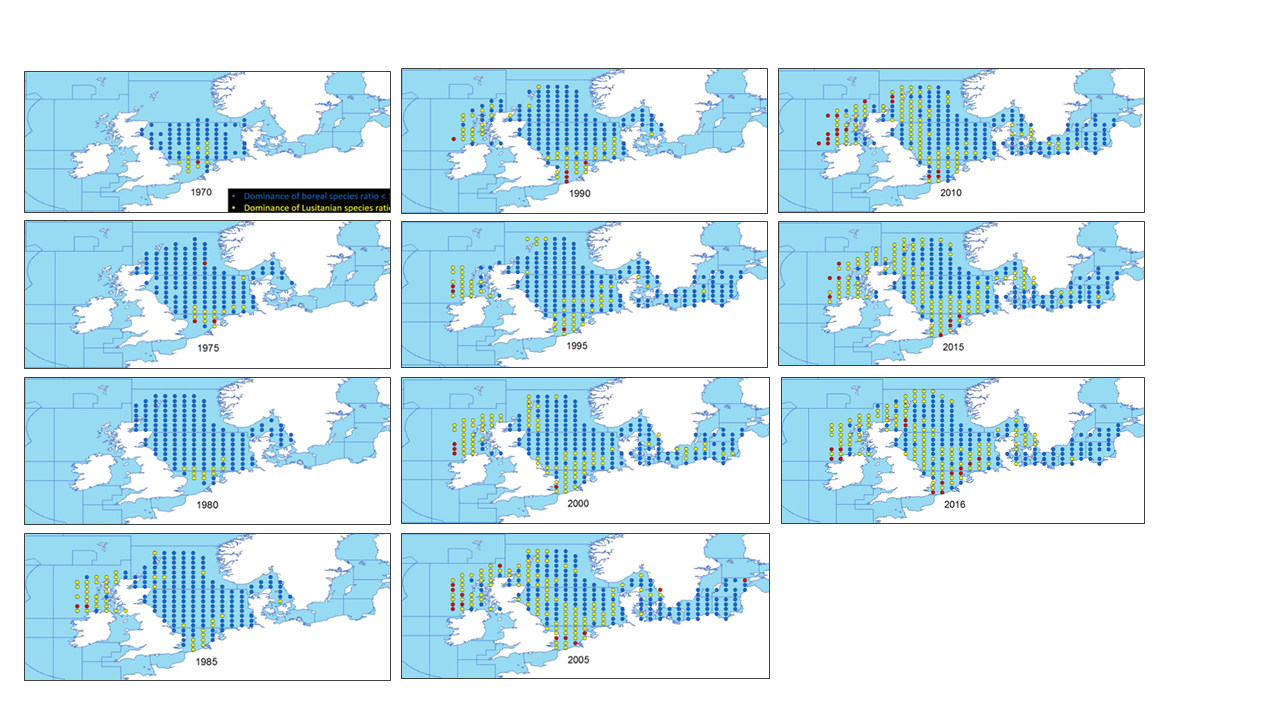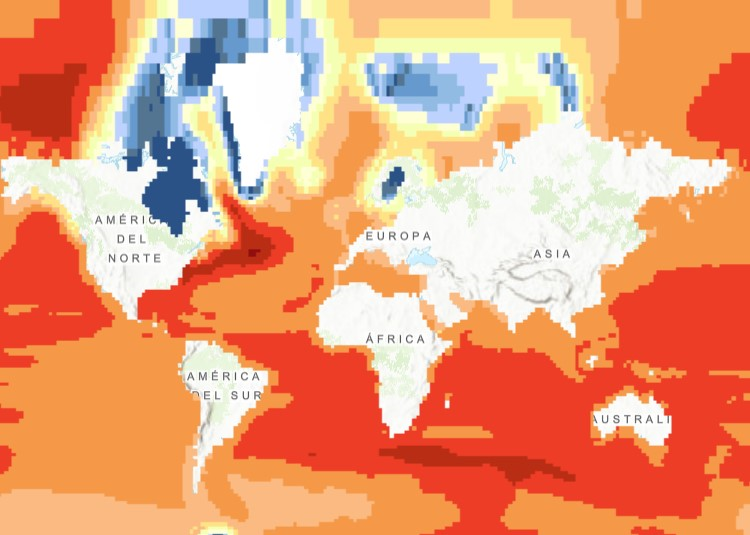1 deg
Type of resources
Available actions
Topics
Keywords
Contact for the resource
Provided by
Years
Formats
Representation types
Update frequencies
status
Resolution
-

This metadata describes the ICES data on the temporal development of the Lusitanina/Boreal species ratio in the periode from 1965 to 2016. Key message: The ratio between the number of Lusitanian (warm-favouring) and Boreal (cool-favouring) species are significantly increasing in 6 of the Northern division whereas there is no significant changes in all the (Southern) other divisions. Blue dots indicates L/A ratios below 1 Yellow dots indicates L/B ratios >=1 and <2 Red dots indicates L/B ratios >=2 The dataset is derived from the ICES data portal 'DATRAS' (the Database of Trawl Surweys). DATRAS is an online database of trawl surveys with access to standard data products. DATRAS stores data collected primarily from bottom trawl fish surveys coordinated by ICES expert groups. The survey data are covering the Baltic Sea, Skagerrak, Kattegat, North Sea, English Channel, Celtic Sea, Irish Sea, Bay of Biscay and the eastern Atlantic from the Shetlands to Gibraltar. At present, there are more than 45 years of continuous time series data in DATRAS, and survey data are continuously updated by national institutions. The dataset has been used in the EEA Indicator "Changes in fish distribution in European seas" https://www.eea.europa.eu/data-and-maps/indicators/fish-distribution-shifts/assessment-1. The dataset has been used for this static map: https://www.eea.europa.eu/data-and-maps/figures/temporal-development-of-the-lusitanina included in the "Marine messages II - Navigating the course towards clean, healthy and productive seas through implementation of an ecosystem‑based approach" (EEA Report No 17/2019) https://www.eea.europa.eu/publications/marine-messages-2
-

The raster dataset (1ºx1º) shows the projected change in relative sea level (in metres) in 2081-2100 compared to 1986-2005 for the medium-low emission scenario RCP4.5, based on an ensemble of Coupled Model Intercomparison Project Phase 5 (CMIP5) climate models. Projections consider land movement due to glacial isostatic adjustment but not land subsidence due to human activities. No projections are available for the Black Sea. The dataset has been used as a source for an earlier version of the EEA indicator “Global and European Sea Level”: https://www.eea.europa.eu/data-and-maps/indicators/sea-level-rise-5/assessment.
 Catalogue PIGMA
Catalogue PIGMA